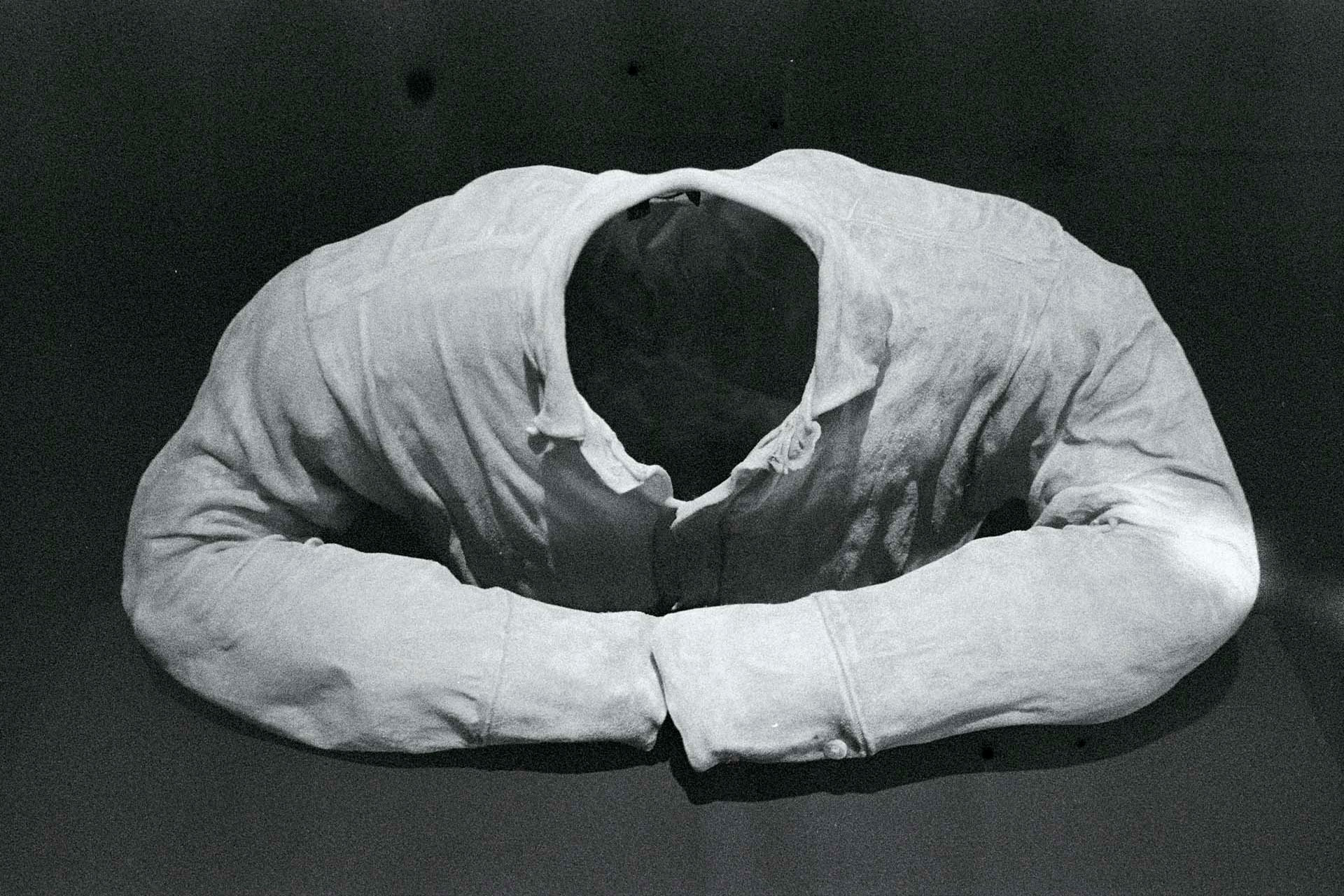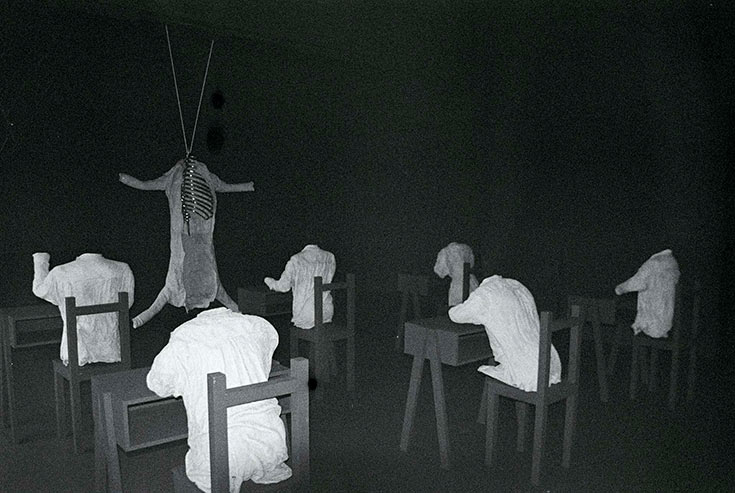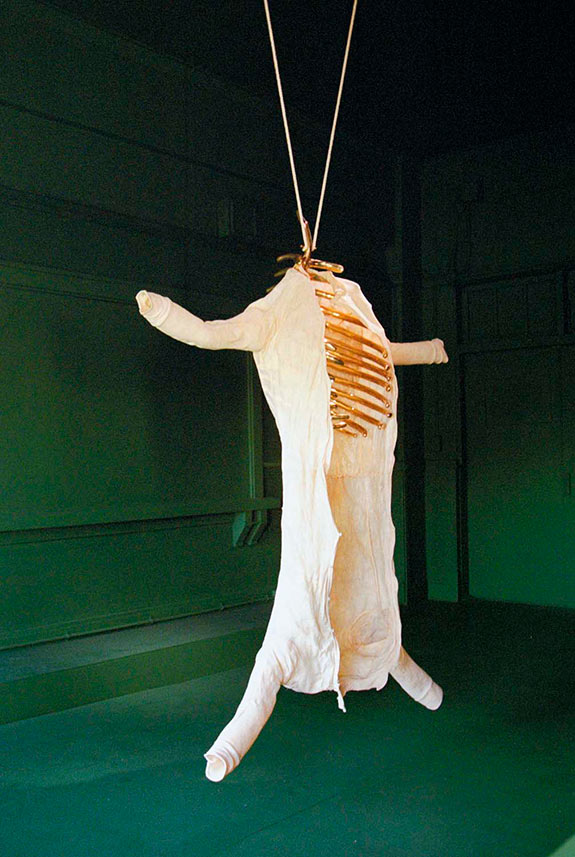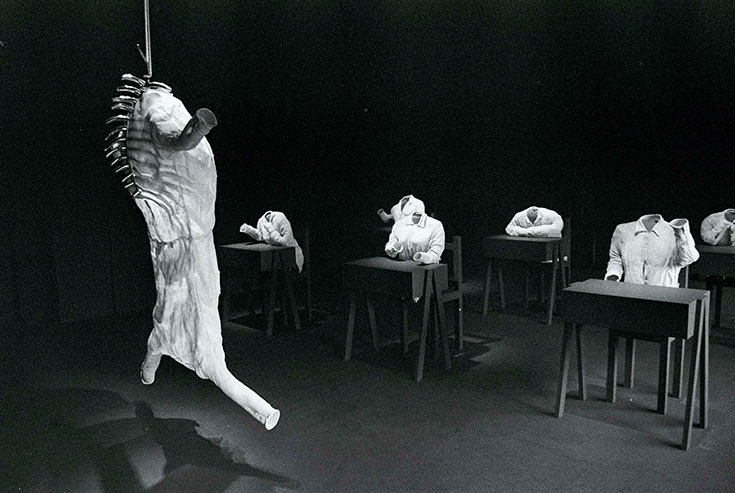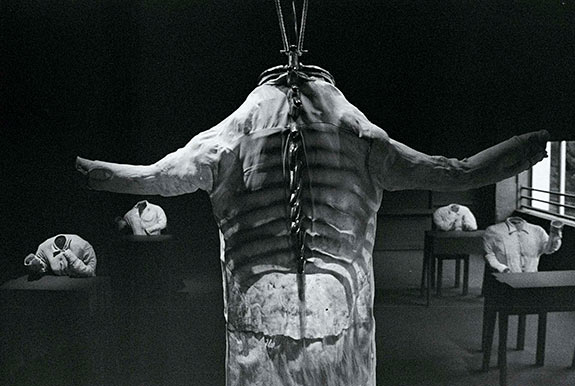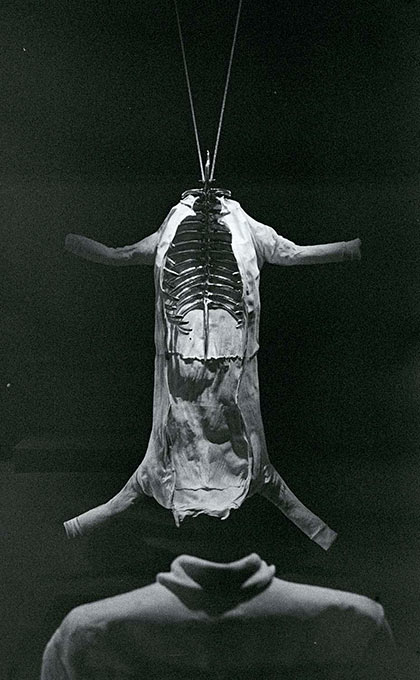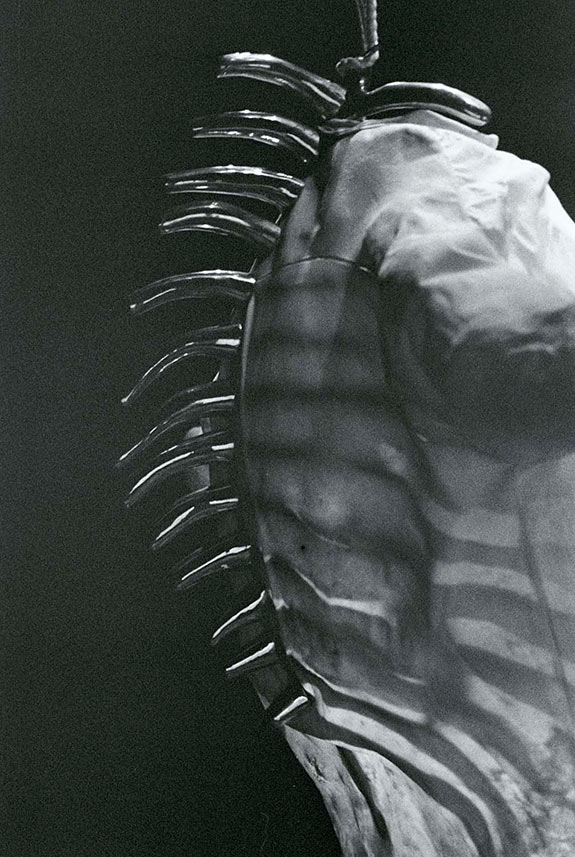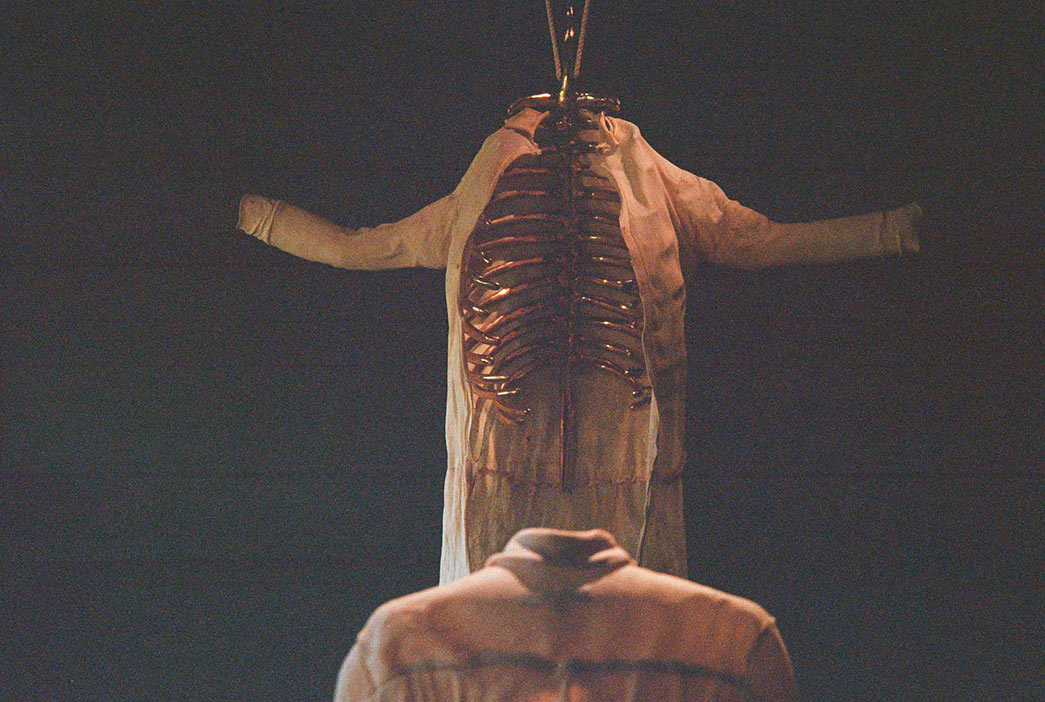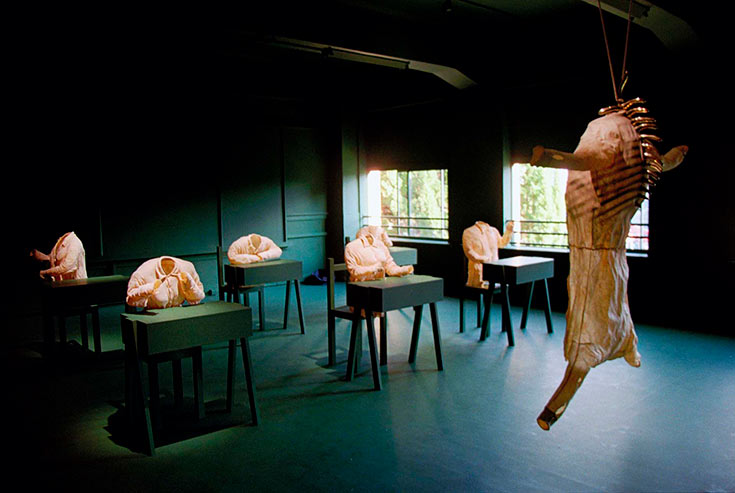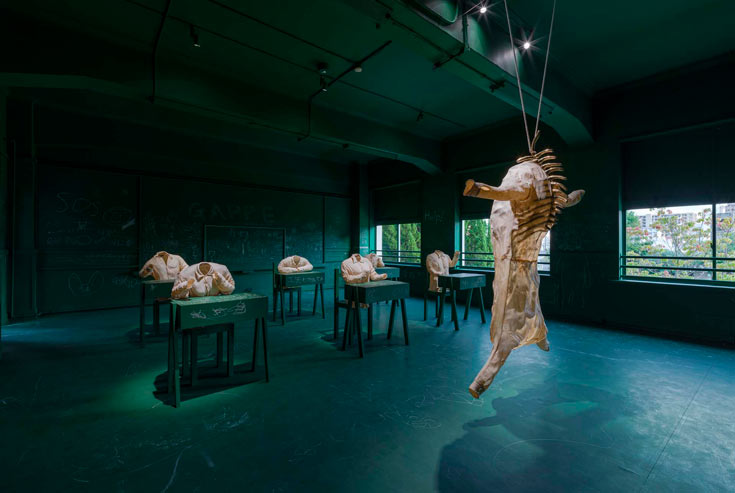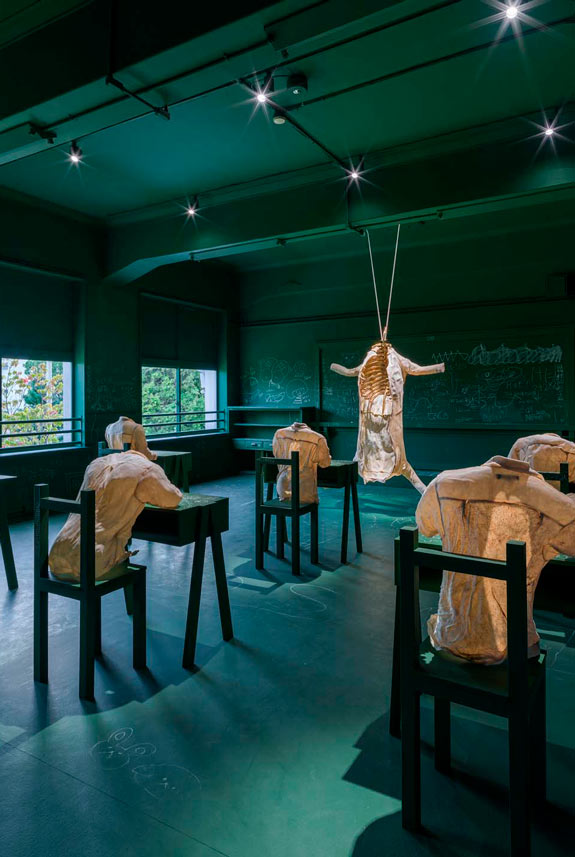Sánchez Kane’s intervention for the Okayama Arts summit was located at the former Uchinsage Elementary School. Its form was certainly influenced by this, as six sculptures, white shirts emptied of their bodies, sat attentively, facing towards an even more striking figure: a beautiful and creepy golden ribcage, hanging from the ceiling, its vertebrae protruding into long, elegant horns, its four arms extended, mid-lesson. The entire room, including the school desks in it, was covered in green chalkboard paint, a gesture that rendered the space into a walkable, ever-changing painting by asking its visitors to feel free to alter its surface.
The set-up was theatrical, the lighting dramatic to emphasize the absence of bodies. That absence was at the center of the work: the idea of getting rid of the body as a standard, of normalcy as imposition borne out of patterns used to unify every human body into neat categories and sizes. The pieces also suggested a non-human agency, the idea of these clothes/sculptures activating themselves despite the absence of human-ness, through its telling material. Because the absence of bodies did not mean an absence of flesh. Sánchez Kane had previously worked with rawhide, that fairly disgusting material, created by removing the fur, meat and fat off of bovines, commonly used to make chewing toys for dogs. The material is extremely fluid, in a constant becoming and unbecoming, as it is very susceptible to water and will hold its shape only as long as it is completely dry, otherwise it quickly spoils. The artist created tailored, stiff white shirts that readily evoked the bodies of students and teachers — their rigidity, included that of the exposed, preciously golden ribcage, a nod to the hardened structures that keep us all in place: gender, class, race. The teacher and students both use the same shirt pattern, a mimicry that insists on the continuity of how authority works: it exists because we reflect it, because we embody it ourselves.
Through the rawhide, a kind of cursed skin, Sánchez Kane also alluded to that organ as a tool of differentiation, of imposed discipline by way of identity: Skin as the container of all the knowledge but also the damaging impositions, expectations and abuse that we carry around with us.

